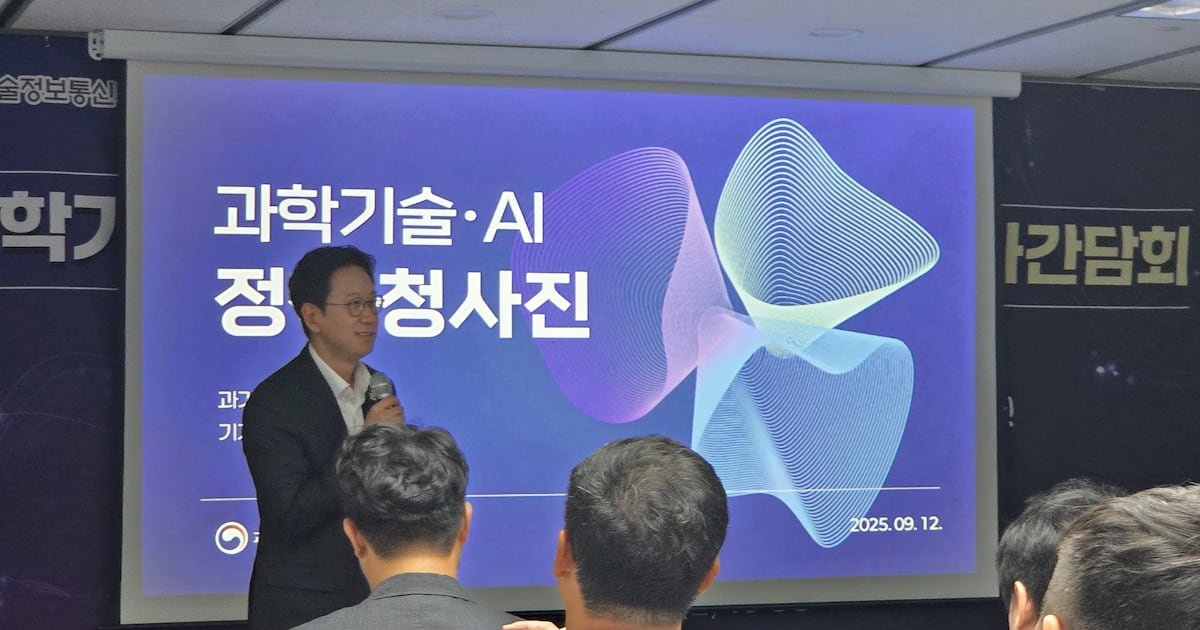Tools & Platforms
Billions in energy, technology investments put Pittsburgh area at center of ‘AI revolution’ – WPXI

Tools & Platforms
Can technology bridge development gaps?

Artificialintelligence promises to revolutionize economies worldwide, but whether developing nations will benefit or fall further behind depends on choices being made today.
The African Union’s historic Continental AI Strategy, adopted in July 2024, represents both unprecedented ambition and stark reality – while AI could add $1.5 trillion to Africa’s GDP by 2030, the continent currently captures just one per cent of global AI compute capacity despite housing 15 per cent of the world’s population.
This paradox defines the central challenge facing underdeveloped countries, particularly across Africa and South America, as they navigate the AI revolution. With global AI investment reaching $100-130 billion annually while African AI startups have raised only $803 million over five years, the question isn’t whether AI matters for development – it’s whether these regions can harness its transformative potential before the window closes.
The stakes couldn’t be higher. The same mobile revolution that enabled Kenya’s M-Pesa to serve millions without traditional banking infrastructure now offers a template for AI leapfrogging. But unlike mobile phones, AI requires massive computational resources, reliable electricity, and specialized skills that remain scarce across much of the Global South.
Africa awakens to AI’s strategic importance
The momentum building across Africa challenges assumptions about AI relevance in developing contexts. Sixteen African countries now have national AI strategies or policies in development, with Kenya launching its comprehensive 2025-2030 strategy in March and Zambia following suit in November 2024. This represents a 33 per cent increase in strategic planning over just two years, signaling that African leaders view AI not as a luxury but as essential infrastructure.
The African Union’s Continental AI Strategy stands as the world’s most comprehensive development-focused AI framework, projecting that optimal AI adoption could contribute six per cent of the continent’s GDP by 2030. Unlike Western approaches emphasizing innovation for innovation’s sake, Africa’s strategy explicitly prioritizes agriculture, healthcare, education, and climate adaptation – sectors criticalto the continent’s 1.3 billion people.
“We’re not trying to copy Silicon Valley,” explains one senior AU official involved in the strategy’s development. “We’re building AI that serves African priorities.” This Africa-centric approach emerges from harsh lessons learned during previous technology waves, when developing countries often became consumers rather than creators of digital solutions.
South America charts cooperative course
Latin America has taken a markedly different but equally strategic approach, leveraging existing regional integration mechanisms to coordinate AI development. The Santiago Declaration, signed by over 20 countries in October 2023, established the Regional Council on Artificial Intelligence, with Chile emerging as the continental leader.
Chile ranks first in the 2024 Latin American Artificial Intelligence Index (ILIA), followed by Brazil and Uruguay as pioneer countries. This leadership reflects substantial investments – Chile committed $26 billion in public investment for its 2021-2030 National AI Policy, while Brazil’s 2024-2028 AI Plan allocates $4.1 billion across 74 strategic actions.
Brazil’s approach particularly demonstrates how developing countries can mobilize resources for AI transformation. The planned Santos Dumont supercomputer aims to become one of the world’s five most powerful, while six Applied Centers for AI focus on agriculture, healthcare, and Industry 4.0 applications. This represents a fundamental shift from viewing AI as imported technology to building indigenous capabilities.
Agriculture proves AI’s development relevance
Critics questioning AI’s relevance to underdeveloped economies need look no further than Hello Tractor’s transformative impact across African agriculture. This Nigerian-founded ‘Uber for tractors’ platform uses AI for demand forecasting and fleet optimization, serving over 2 million smallholder farmers across over 20 countries. The results are striking: farmers increase incomes by 227 per cent, plant 40 times faster, and achieve three-fold yield improvements through precision timing.
Apollo Agriculture in Kenya and Zambia demonstrates how AI can address financial inclusion challenges that have plagued agricultural development for decades. Using machine learning for credit scoring and satellite data for precision recommendations, the company serves over 350,000 previously unbanked farmers with non-performing loan rates below 2 per cent – outperforming traditional banks while serving supposedly high-risk populations.
These aren’t pilot projects or development experiments. They’re profitable businesses solving real problems with measurable impact.
Investment patterns reveal global disparities
The funding landscape starkly illustrates development challenges facing AI adoption. Global AI investment reached $100-130 billion annually, while African AI startups raised $803 million over five years total. Latin American venture capital investment fell to $3.6 billion in 2024, the lowest in five years, with early-stage funding dominating 80 per cent of deals.
This investment concentration perpetuates technological dependence. The United States and China hold 60 per cent of all AI patents and produce one-third of global AI publications. 100 companies, mainly from these two countries, account for 40 per cent of global AI R&D spending, while 118 countries – mostly from the Global South remain absent from major AI governance discussions.
Risks of digital colonialism loom large
However, current trends suggest widening rather than narrowing divides. Tech giants Apple, Nvidia, and Microsoft have achieved $3 trillion market values that rival entire African continent’s GDP. This concentration of AI capabilities in a handful of corporations based in wealthy countries creates dependency relationships reminiscent of colonial-era resource extraction.
Digital colonialism emerges when developing countries become consumers rather than producers of AI systems. Most AI training occurs on Western datasets, creating cultural and linguistic biases that poorly serve non-Western populations. Search results in diverse countries like Brazil show predominantly white faces when searching for babies, reflecting training data biases.
Toward inclusive AI futures
The path forward requires acknowledging both AI’s transformative potential and persistent barriers to equitable adoption. Infrastructure limitations, skills gaps, and funding disparities create formidable challenges, but successful implementations across agriculture and healthcare demonstrate achievable progress.
Regional cooperation frameworks like the African Union’s Continental AI Strategy and Latin America’s SantiagoDeclaration offer models for coordinated development that can compete with concentrated wealth and expertise of traditional tech centers. These approaches emphasize development priorities rather than pure technological advancement, potentially creating more inclusive AI ecosystems.
The mobile revolution precedent suggests optimism about leapfrogging possibilities, but success requires sustained political commitment, adequate funding, and international cooperation. Countries that invest strategically in AI foundations while fostering indigenous innovation can position themselves to benefit from rather than be left behind by the AI transformation.
The global AI divide represents both the greatest risk and greatest opportunity facing international development in the 21st century. Whether AI bridges or widens global inequalities depends on choices being made today by governments, international organizations, and private sector actors. The stakes-measured in trillions of dollars of economic value and billions of lives affected – demand urgent, coordinated action to ensure AI serves human development rather than merely technological advancement.
The African farmer using Hello Tractor’s AI platform to improve crop yields and the Brazilian patient receiving AI-enhanced diagnostic services demonstrate AI’s development relevance. Whether such success stories become widespread or remain isolated examples depends on the policy foundations being laid across developing countries today. The AI revolution waits for no one – but its benefits need not be predetermined by geography or existing wealth. The window for inclusive AI development remains open, but it will not stay open forever.
(Krishna Kumar is a Technology Explorer & Strategist based in Austin, Texas, USA. Rakshitha Reddy is AI Engineer based in Atlanta, Georgia, USA)
Tools & Platforms
Meta CFO says Superintelligence AI Lab is already working on next model

Facebook-parent Meta’s Chief Financial Officer, Susan Li, has confirmed the existence of the company’s new research unit, TBD Lab. The unit, which Li says is composed of “a few dozen” researchers and engineers, is focused on developing the social media giant’s next-generation foundation models. According to a report by the news agency Reuters, Li told investors at the Goldman Sachs Communacopia + Technology conference that the name TBD, which stands for “to be determined,” was a placeholder that “stuck” because the team’s work is still taking shape. What Susan Li said about Meta’s TBD AI labAt the conference (as reported by Reuters), Li said: “We conceive of it as sort of a pretty small, few-dozen-people, very talent-dense set of folks.”The TBD Lab is part of a larger reorganisation of Meta’s AI efforts under the umbrella of Meta Superintelligence Labs. The team’s goal is to push the boundaries of AI over the next one to two years, positioning Meta to compete more effectively with other major players in the AI race.Reuters cited another report from last month to claim that Meta has split its Superintelligence Labs into four groups, which are: a “TBD” lab (still defining its role), a products team (including the Meta AI assistant), an infrastructure team, and the long-term research-focused FAIR lab. Earlier this year, Meta reorganised its AI division under Superintelligence Labs after senior staff left and its Llama 4 model received mixed feedback. The company’s CEO, Mark Zuckerberg, has lately been personally leading aggressive hiring efforts, offering oversized pay packages and directly reaching out to talent on WhatsApp. In July, he said the new setup brings together foundations, products, and FAIR teams, along with a fresh lab focused on building the next generation of AI models.
Tools & Platforms
Bae Kyung-hun vows to cut AI gap with US to 0.5 years and boost Korea growth – CHOSUNBIZ – Chosun Biz
-

 Business2 weeks ago
Business2 weeks agoThe Guardian view on Trump and the Fed: independence is no substitute for accountability | Editorial
-
Tools & Platforms1 month ago
Building Trust in Military AI Starts with Opening the Black Box – War on the Rocks
-

 Ethics & Policy2 months ago
Ethics & Policy2 months agoSDAIA Supports Saudi Arabia’s Leadership in Shaping Global AI Ethics, Policy, and Research – وكالة الأنباء السعودية
-

 Events & Conferences4 months ago
Events & Conferences4 months agoJourney to 1000 models: Scaling Instagram’s recommendation system
-

 Jobs & Careers2 months ago
Jobs & Careers2 months agoMumbai-based Perplexity Alternative Has 60k+ Users Without Funding
-

 Podcasts & Talks2 months ago
Podcasts & Talks2 months agoHappy 4th of July! 🎆 Made with Veo 3 in Gemini
-

 Education2 months ago
Education2 months agoVEX Robotics launches AI-powered classroom robotics system
-

 Education2 months ago
Education2 months agoMacron says UK and France have duty to tackle illegal migration ‘with humanity, solidarity and firmness’ – UK politics live | Politics
-

 Podcasts & Talks2 months ago
Podcasts & Talks2 months agoOpenAI 🤝 @teamganassi
-

 Funding & Business3 months ago
Funding & Business3 months agoKayak and Expedia race to build AI travel agents that turn social posts into itineraries


